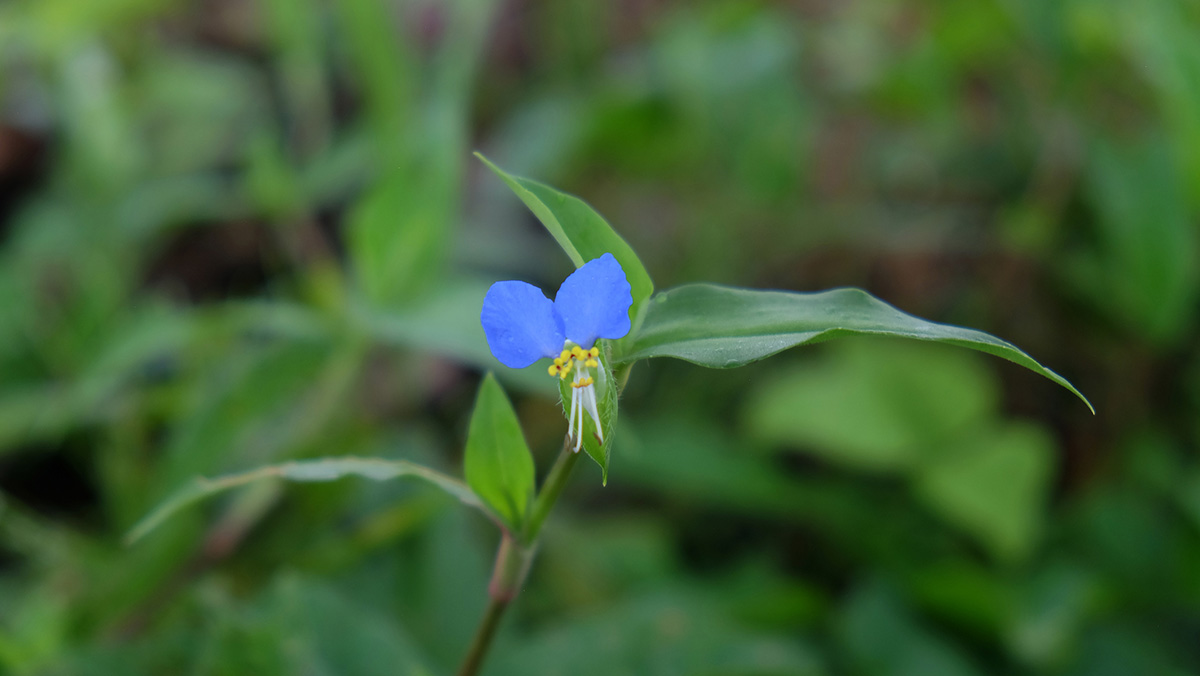英検®にチャレンジしよう!準1級の練習問題 – 長文QA
攻略ポイントはここ! 英検®合格への道しるべ

英検®準1級リーディング大問3、長文の内容を問う問題の5回目です。大まかな話の流れはもちろん、本文と設問の細部にも気を配って解くようにしましょう。
お得な情報
小学校での英語教科化、高校・大学受験で英検が使用出来たりと、英検®受験熱は高まる一方です。
Cheer up! Englishでは英検®を受ける方におススメの学校・レビューをご紹介
英検®準1級リーディング大問3 長文問題
Read the passage and choose the best answer from among the four choices for each question.
Dayflower
We see dayflowers covering the ground in moist, shady places in the summer. It takes its name from the fact that it only lasts for one day, or sometimes even less. One might think, that it would bloom for several months of the year, but because there are several buds on a stem, when one flower fades, another blossoms to take its place.
The flower has three petals; the two biggest ones are blue, and the smallest one is white and inconspicuous. Many gardeners consider the plant a weed, but some cultivate it in their garden. It’s true that the small flower has its charm with a pleasant blue color under the hot sky August sky. In China, the plant has been known to have medicinal effects such as anti-inflammatory and anti-bacterial properties.
Its scientific name, Commelina, comes from the name of a family of botanists, Commelin. Their friend, botanist Carl Linnaeus, chose the name as a tribute to the Commelin brothers. In Japan, the wild flower has almost two hundred different names that have regularly appeared in poetry.
(1) What is the origin of the name “dayflower”?
1 The fact that the flower blooms on hot summer days.
2 The fact that the flower blooms only for a day.
3 The fact that we can replace the flower easily with another.
4 The fact that the flower opens in the morning and closes in the evening.
(2) For what purpose has the dayflower been useful?
1 It can help eliminate weeds in gardens.
2 The flower has a smell that repels harmful insects.
3 It has the potential to enhance one’s well-being and promote better health.
4 Its white petal has a nice scent and can be used for perfume.
(3) According to the text, which is true about the other names of the dayflower?
1 Japanese people have given it many different names.
2 In Japanese poetry, we find its name along with two hundred other wild flowers.
3 A scientist gave his own name to the plant.
4 A botanist chose the first name of a friend as its scientific name.
解答・解説
(1) 2
第一段落2文目it only lasts for one dayがthe flower blooms for a dayに言い換えられている。forは期間を表す前置詞であり、直訳すれば「一日間(いちにちかん)咲く」という意味になる。
(2) 3
第二段落最後の文のhave medicinal effectsがhas the potential to enhance one’s well being and promote better healthに言い換えられている。
(3) 1
第三段落3文目the wild flowerはdayflowerの言い換えであることに注意。選択肢2のように他の野草について書いているのではない。
選択肢3のように、植物学者が自分の名前を付けたのではない。
選択肢4はfirst nameが間違い。第三段落最初の文にthe name of a familyと書いてあるので、苗字であることは明らか。
和訳
ツユクサ
夏にはツユクサが、湿った影の多い場所で地面を覆っているのが見られる。その名前(dayflower)は、花がわずか一日か、時にはもっと短い間しかもたないことから来ている。数か月咲いているように思う人もいるかもしれないが、ひとつの茎に複数のつぼみが付くため、花がひとつしぼむと別の花が咲いて後を引き継ぐのである。
花には三つの花弁がある。大きいふたつは青く、小さいのは白くて目立たない。多くの園芸家はツユクサを雑草と見なしているが、中には自分の庭で育てる者もいる。暑い8月の空の下、すがすがしい青色を持った小さな花にそれなりの魅力があるのは確かだ。中国では、抗炎症作用や抗菌作用など薬効も知られている。
科学名のCommelinaは、植物学者一家の名前、Commelinから来ている。一家の友人である植物学者Carl Linnaeusが、Commelin兄弟を記念するためにその名を選んだのである。日本では、この野草は200近い様々な名前を持っていて、詩歌に歌われてきた。
(1) “dayflower”の名前の由来は何ですか。
1 花が夏の暑い日々に咲くということ。
2 花が一日の間だけ咲くということ。
3 ツユクサはたやすく他の花に代えられるということ。
4 花が朝開き夕方に閉じるということ。
(2) どんな目的のためにツユクサは役立ってきたのでしょう。
1 庭の雑草を取り除く助けになる。
2 花には害虫を寄せ付けない匂いがある。
3 健全性を高め、健康を増進する潜在力がある。
4 白い花弁には良い香りがあり、香水に使える。
(3) 本文によれば、ツユクサの他の名前について正しいのはどれですか。
1 日本人はツユクサに他の多くの名を付けた。
2 日本の詩歌には、ツユクサの名が他の200の野草と共に見られる。
3 ある科学者が自分の名をこの植物に付けた。
4 ある植物学者が学名として、友人のファーストネームを選んだ。
| ライタープロフィール●外国語人 | |
 |
英語、フランス語、外国語としての日本語を教えつつ、語学力に留まらない読む力、書く力を養成することが必要であると痛感。ヨーロッパで15年以上暮らし、とりあえず帰国。この世界の様々な地域で日常の中に潜む文化の違いが面白くて仕方がない。子育て、犬育て中。TOEIC®985点 |
※英検®は、公益財団法人 日本英語検定協会の登録商標です。このコンテンツは、公益財団法人 日本英語検定協会の承認や推奨、その他の検討を受けたものではありません。



















